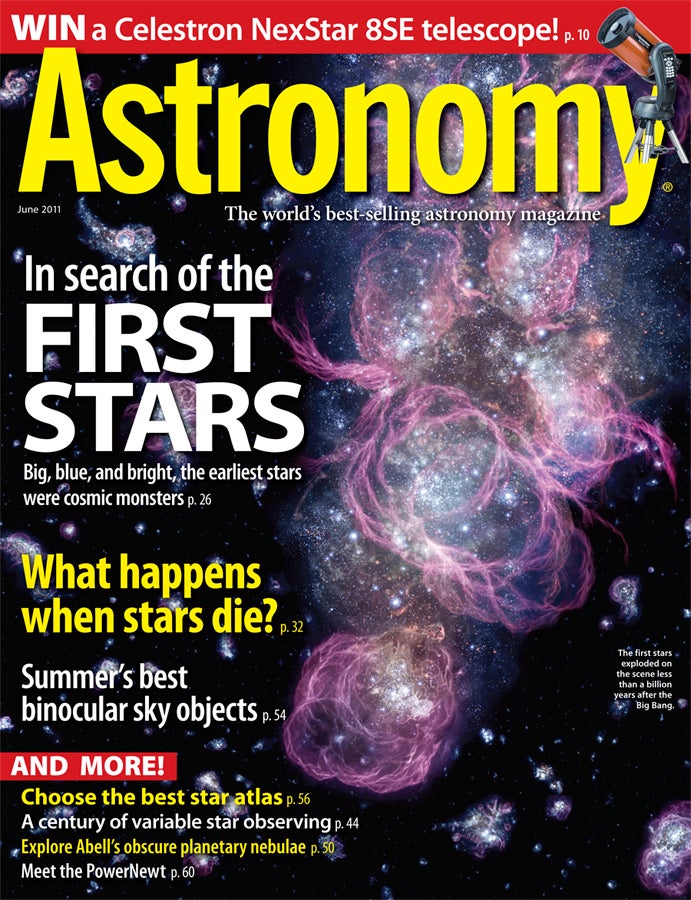
WAUKESHA, Wis. — Over the past several decades, astronomers have put bookends on the 13.7 billion years that have elapsed since the Big Bang and the creation of our universe. At one end is the frozen fingerprint of the Big Bang fireball, which establishes the moment when the universe gained light some 380,000 years after its creation. The other bookend is the nearby universe representing today’s cosmos. Between these two, astronomers have filled in many chapters of galactic evolution, but one key story is missing: In the first 480 million years after light began traveling the universe, how did the universe start assembling the first stars and galaxies?“In search of the first stars” by Ray Villard explores what scientists think took place as the universe cooled and expanded in those first phases of growth. Most theories come from sophisticated computer models. Scientists have been able to peer back 12 billion years using the Hubble Space Telescope, but they’ve now reached a limit in observational analysis. To verify these simulations, they’ll need a new telescope.“Enter the Webb Space Telescope,” Villard writes. “The largest and most complex observatory ever built, Webb’s 6.5-meter segmented mirror should carry astronomers into the dim, remote era between 200 and 500 million years after the Big Bang.”To learn the most likely way scientists believe the first stars developed and how they hope to confirm their theory, pick up the June issue of Astronomy, on newsstands May 3.
“What happens when stars die?”
Everything about a star’s life depends on its mass, including what happens to it when it dies. Some will become beautiful planetary nebulae before leaving behind a white dwarf. Others will explode as supernovae, and some of those will even collapse into black holes. In “What happens when stars die?” Associate Editor Liz Kruesi explores the cosmic cemetery of stellar remnants and explains where the various corpses come from.
“Choose a star atlas that’s right for you”
A constant question Astronomy magazine receives from beginners and advanced observers alike is, “Which star atlas should I use?” The answer: That depends on your experience, your goals, and your equipment. Luckily, there’s a star atlas out there for everyone, and Senior Editor Michael E. Bakich details 10 great ones in “Choose a star atlas that’s right for you.” The options range from introductory aides to a book with more than 200 million stars, with every level described in between.
June sky events visible without optical aid
- June 1 — A partial solar eclipse is visible in parts of North America, Europe, and Asia.
- June 10 — The Moon and Saturn form a nice pair in the evening sky.
- June 15 — Observers across most of Europe, Africa, Asia, and Australia will witness a total lunar eclipse.
- June 27/28 — The Boötid meteor shower peaks.
Also in the June 2011 Astronomy
- “A century of variable star observing” — Since its start in 1911, the American Association of Variable Star Observers has served amateur and professional astronomers.
- “Explore Abell’s obscure planetary nebulae” — Scant details, low surface brightnesses, and tiny sizes scare away most amateur astronomers. The best observers, however, see this list of faint, dead suns as a challenge.
- “10 great summer binocular sights” — Give your telescope a night off and target these wonders through binoculars.
- “Meet the PowerNewt” — This new Boren-Simon astrograph offers 8 inches of aperture, a fast focal ratio, and high-quality optics.
- “The Sky this Month” — Exclusive pullout star charts will guide you through June’s night sky.
- The June issue of Astronomy also includes Astro News, Bob Berman’s Strange Universe, Glenn Chaple’s Observing Basics, David H. Levy’s Evening Stars, Stephen James O’Meara’s Secret Sky, Tony Hallas’ Imaging the Cosmos, Ask Astro, Astro Confidential, Deep-sky Showcase, The Cosmic Grid, New Products, and Reader Gallery.









